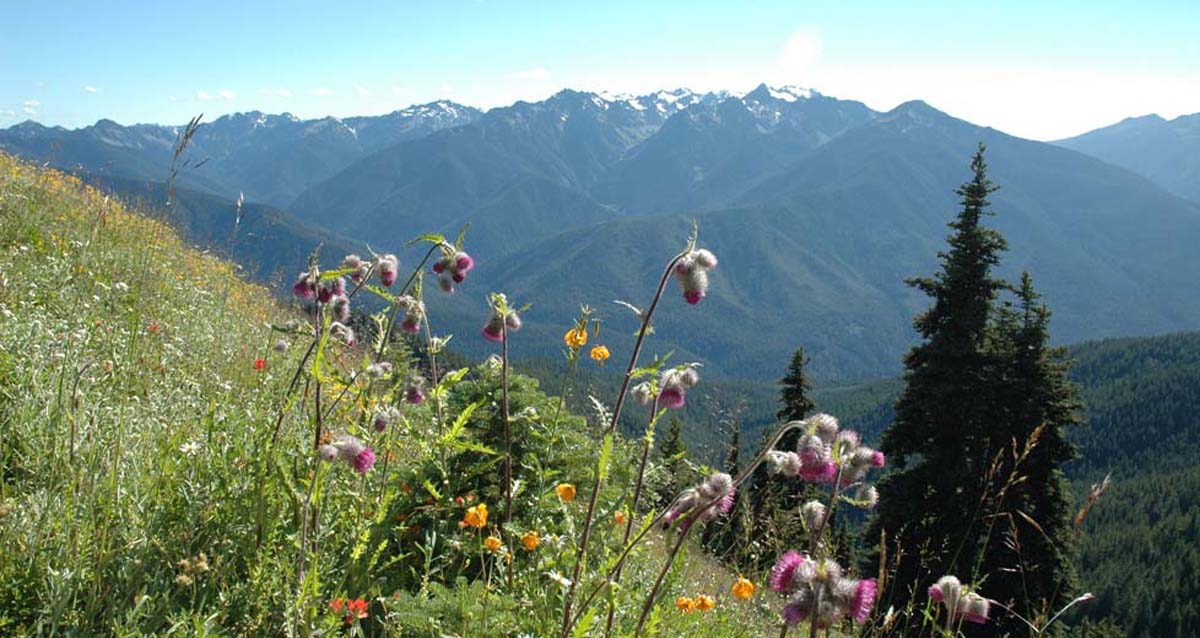One morning, a peacock showed up! I looked out the window and there it was, wandering the yard near my garden. I couldn’t figure out how a peacock, of all possible things, had found its way to our rural enclave. When you think of the Olympic Peninsula, certainly bald eagles come to mind. Salmon, of…
Snow Goose – A rare sighting
Sightings of Snow Geese (Chen caerulescens) are rare on the Olympic Peninsula, particularly in the coastal areas west of Port Angeles. Yet on November 9, I noticed a single goose that I didn’t recognize wandering on my land. It was a beautiful gray and white bird lacking the characteristic white chin strap of the Canada Goose, which is both common and plentiful in our area this time of year.
Bobcat!
This curious bobcat came by the house early this morning to check out our hens. He (or she) seems underweight for this time of year, so I suspect it’s a juvenile still learning to hunt. I took this picture with my Nikon, but later that day, I checked one of several game cameras I have…
Orange-crowned Warbler
In spring, the Orange-crowned Warblers (Oreothlypis celata) are frequently seen flitting around in bushes and small trees looking for insects. They can be spotted crossing open meadows as they move from one woodland area to another where willow, alder, and maple are plentiful. The males arrive each year before the females to establish territory, which they…
The Golden-crowned Kinglet. North America’s smallest songbird.
At a mere 4 by 7 inches, the Golden-crowned Kinglet (Regulus satrapa) is the smallest songbird in North America. On the Olympic Peninsula, it is a year-round resident. Though widely seen and active high up in dense woodland habitats, one has to listen carefully to hear their high-pitched tsee-tsee-tsee call. Kinglets are small but hardy….
A bird’s eye view of a bald eagle nest
One evening in March 2017, I glanced out the living room window and noticed a bald eagle flying over a tall stand of trees. It was carrying a long stick in its talons. There had once been an active nest in a neighboring fir. During a winter storm in 2006, the top third of that tree broke off and tumbled into the sea. For several days following the event, I observed the eagle pair flying erratically near the fractured tree and screeching. A year later, they began to build the new nest and, as far as I knew, never spent any time there. Now, it seemed, things were changing.
The Rufous Hummingbird
The Rufous gets its name from the color of the males—with reddish upperparts and brown crowns. The females have mostly green upperparts and white bellies. The females are seen more frequently at feeders and are less territorial than the males who will not tolerate other males of their species or other species of birds entirely.
The Belted Kingfisher
Belted kingfishers (Megaceryle alcyon) make a prominent appearance along local shorelines with their loud, cackling calls and determined flight patterns. They are largely aquatic feeders with skilled diving techniques, using their long straight bills to catch their prey in the water. The birds are short, stocky, and bluish-gray, with a rock-star-quality crest on the head…
If it’s fall, it must be Turkey Vultures
Every year, from late September to early October, I look forward to the southbound Turkey Vulture migration from Vancouver Island to the Olympic Peninsula, when hundreds of birds make the 12-mile flight across the Strait of Juan de Fuca.
Last rodent standing: The Mountain Beaver
Along the coastline of the northern Olympic Peninsula, a relatively obscure rodent has been burrowing out an existence beneath stands of Douglas-fir and western hemlock for centuries. Known commonly as “mountain beaver,” no relation to the North American Beaver, has been called many names, notably “boomer,” “ground bear,” “giant mole,” or “sewellel beaver.”

